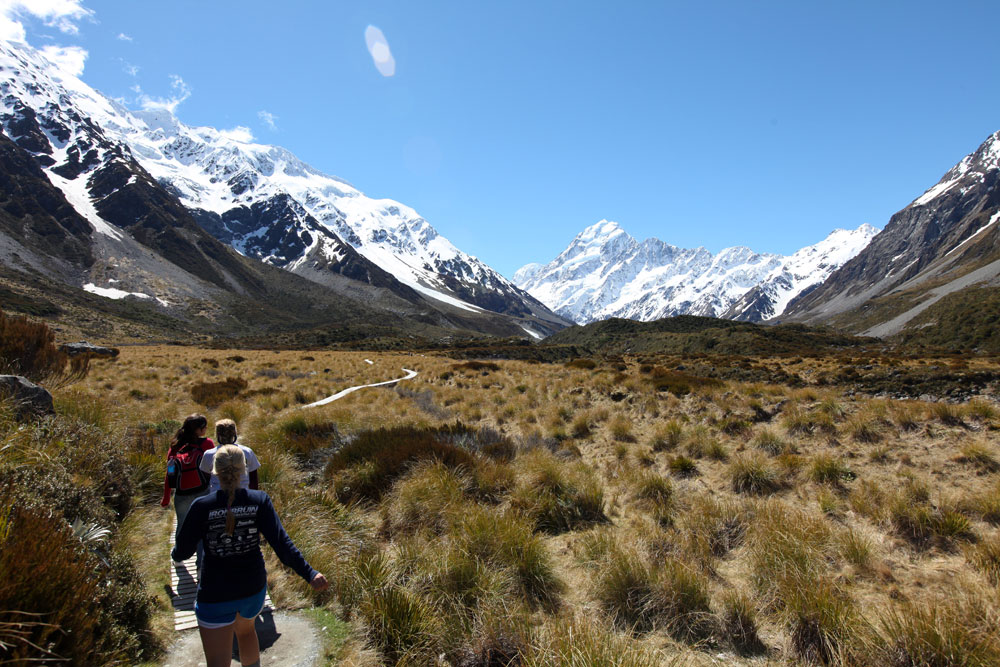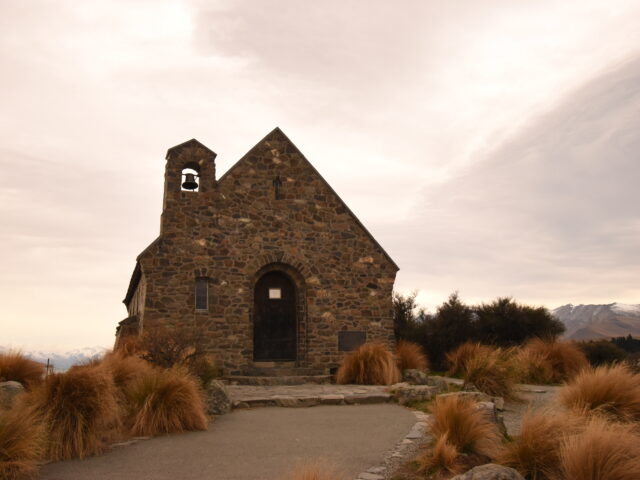Although American students studying abroad in New Zealand typically have a great academic experience, the feedback we have received from working with thousands of students from the U.S. is that there are still some surprising differences between the two systems that require an adjustment.
“I loved my academic experience, even with it being so different from what I’m used to.” Shannon Meyer, College of Charleston, studied abroad at Victoria University of Wellington

Higher Education Structure
The higher education system in New Zealand is based on the UK system. A traditional business or arts degree takes three years of full-time study while engineering, education and other professional degrees can take four to six years.
A big difference from the U.S. is that students major very early on in their degrees, take no general education requirements and take very few electives. It is considered that the tough final year of high school provides the general education background equivalent to the general education requirements in the U.S. higher education system.
Due to the highly specialized degree structure, very few New Zealand students take courses outside of their discipline. However, U.S. study abroad students attending New Zealand universities can take courses from across the different disciplines and usually do so.
“I was fortunate where I had the luxury of taking some of my general electives while abroad and got to explore classes outside of my major.” Brianna Siravo, Quinnipiac University, studied abroad at the University of Otago
Explore New Zealand Study Abroad Programs
Structure of courses (papers)
First of all, at some universities in New Zealand courses are called “papers”. Most business and humanities courses have two components: lecture and tutorial. A lecture can be quite large (sometimes 200 students in first-year lectures), is led by the professor teaching the class, covers the material for the week and is as it sounds – a lecture. Very little interaction happens during a lecture.
Tutorials are smaller groups (usually around 15 to 25 students), support the content of the lecture and allow for student discussion. Think of the tutorials as a review session. While the tutorial can be taken by the professor, they can sometimes also be led by teaching assistants (TAs) or grad students.
While attendance is rarely taken at the lecture, it is often recorded in tutorials and a lack of attendance may affect your grade. Make sure you read the course outline (syllabus) provided in the first week of classes to learn about the attendance and participation requirements.
The number of hours for lectures and tutorials can vary between papers but typically there are two one-hour lectures and one one-hour tutorial per week. There is some variation on this. For example, Global Tourism at the University of Otago has three one-hour lectures per week and no tutorial. Typically all science courses, including psychology, have a laboratory component built into the paper. Science students will therefore have more contact hours for the labs in addition to lectures.
“It was interesting to see the way courses were set up with both lectures and tutorials, which is not how it usually happens in my home university. The lectures had huge class sizes where new material was introduced. And tutorials were where we were split into smaller groups and given assignments in order to absorb the new material. I found this to be a very productive experience.” Sharath Sreenivas, Indiana University, studied abroad at AUT University

Assessment and final exams
You should expect less assigned homework in New Zealand because your final grade is based on just a few assessments. Usually there will be a paper due around mid semester and one final exam assessing your knowledge from the entire semester that is usually worth at least 50% of your final grade. Science courses will also have lab reports as part of the assessment.
With none of the “busy work” typical of U.S. college courses, it can feel like you don’t have to do as much. However, if you don’t keep up with readings that have been specified in your course outline each week, it’s really easy to fall behind. The reason your essay is due in Week 7 is because your professor expects you to have been working on it for seven weeks. There is an expectation in New Zealand that you should be spending a significant amount of time engaged in independent study outside of the classroom.
“I won’t lie, the idea that up to 70-80% of your grade can be decided based on your final exam can be quite intimidating at first, considering how different this was from my home school. However, I feel like this structure of the courses emphasizes good work ethic in that you have to keep up with course material throughout the semester, as there are not many internal assignments that add to your grade.” Brianna Siravo, Quinnipiac University, University of Otago
Get to know your Professors
With possibly less contact hours and more of a focus on independent learning, some U.S. students initially have some concerns. However, Kiwi professors are very approachable if you need assistance, are less formal than in the U.S. and commonly go by their first names. Although office hours are not common, professors are quick to reply to emails and happy to make a time to chat with you. We also suggest that you make an effort to introduce yourself to your professor.
“Although each professor did not have office hours like they do at my home university, they were all willing to make time out of their busy schedules to meet with me when I asked for a little extra help.” Kristen Cardarelli, University of New Hampshire, studied abroad at Victoria University of Wellington
“I really enjoyed the NZ education structure. The casualness between professors and students was refreshing and I enjoyed the lecture/tutorial format.” Nicholas Johnstone, College of Charleston, Victoria University of Wellington

* Top image caption: “This was a work in progress picture of a mural by street artist Fluke in collaboration with studio artist Talia Carin on the Otago University campus. Not only a beautiful and bright piece but the mural is of a hongi which symbolizes the sharing of breath with another. The image represents shared breath and knowledge, as well as the commitment of treating a visitor as one of your own in the Māori worldview.” Tiffany Young, University of Hartford
Have any questions about studying in New Zealand? Just ask us! Learn more about our programs in New Zealand.







